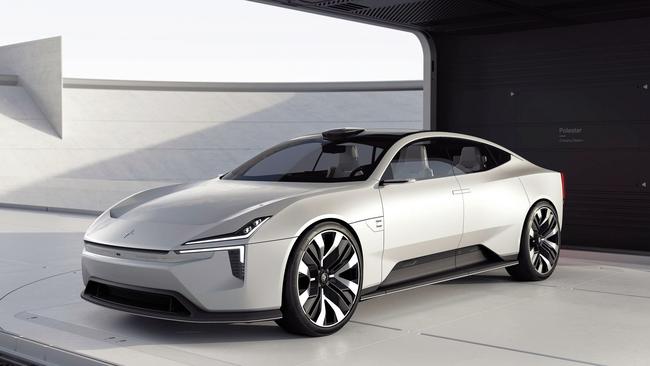Review: Polestar Model 5
This racy Swedish Volvo offshoot is as swift as it is efficient.

To quote Tay-Tay, haters gonna hate, but the truth is there’s really only one bridge the current crop of electric vehicles is yet to cross, and that is delivering a genuine sense of white-knuckle excitement from behind the wheel.
Or, to put it another way, unless you’re driving something that has more vowels in its name than seats in its cabin (we’re looking at you Italy), there is probably already an electric vehicle that can do everything your car can do, only better.
OK, so there are one or two caveats to that rule: proper utes and towing SUVs. But the electric bell will soon toll for them, too. And besides, on the excitement scale, both rank somewhere around a televised bridge tournament and watching their owners’ beards grow, so we’ll leave them out of it for now.
Anyway, yes, EVs are clever, efficient, and sometimes very fast (or Swift, even), but they still often lack true theatre and soul.
That could all be about to change. It’s a realisation that hits me as I’m staring straight ahead, but out of the passenger window of a camouflage-wrapped Polestar Model 5 that’s now completely sideways, little bits of rubber flying off its massive 21-inch Michelin Pilot Sport tyres, the bitumen being sucked into its furious orbit as it Gatling-gun pings off its underbody.
At the wheel is Polestar test pilot Chris Baguley, who with every stab of the accelerator has the P5’s back end changing direction as effortlessly as the most seasoned of politicians. Boring this is not. But nor is it quite like any Polestar to have gone before it.
The Swedish electric vehicle maker is an offshoot of safety-obsessed Volvo, and the cars we’ve seen so far (the Polestar 2 and the incoming P3) share their important parts with their better-known sibling.
But not the Polestar 5. This one was brewed in a UK performance skunkworks, staffed by engineers who’ve worked across McLaren, Lotus and various F1 teams, and who were tasked with creating a vehicle like no other in the brand’s stable.
To do it, they didn’t just have to prototype a new car, but also an entirely new production technique for the company, turning to the bonded aluminum space-frame chassis technique preferred by low-volume supercar makers.
Beyond “supercar levels” of stiffness and significant weight savings, the technique also gives its designers and engineers limitless flexibility in what the Polestar should look and feel like.
It means the team started with a literal blank piece of paper, rather than trying to retrofit an existing vehicle platform.
It’s part of the reason there’s no rear windscreen (removed and replaced by a digital rear-view mirror to give rear passengers more head room).
And it’s why this four-door coupe looks both impossibly wide and impossibly low, taking in more than five metres between a rear diffuser that turns upward at each end like a Joker smile and the black front splitter that juts out from beneath its bonnet so noticeably that it could almost be mistaken for a member of rugby league’s Cleary clan.
You can also forget high-tech driving aids such as air suspension or active anti-roll wizardry. Polestar says they only detract from the purity of the drive experience, and that you simply don’t need them if you get it right in the first place.
Terms such as “zero compromises” and “our manifesto” pop up often in conversation here, and it’s clear that this camouflaged behemoth, and how it will be received by the world at large, means a whole lot to the people who work here.
The Polestar 5 is scheduled to go into production next year. When it does, it should command a $200k price tag at least, and will be offered in rear-wheel-drive and all-wheel-drive formats.
Some of the important details are still being kept under wraps, but we do know it will ride on an 800-volt architecture (unlocking the fastest charging options) and will be offered in twin-motor (think over 600kW) or single-motor (around 400kW) guises.
It will also be home to a massive 100kWh battery pack, which should mean a driving range of around 600km before you have to plug it in.
Which brings us back to this rain-soaked test track in a typically damp patch of England, where the still-ticking P5 is now returning to its bunker.
“This is the rear-wheel-drive version, which is nearer to the entry level, but it still hustles,” Baguley tells me. “This has to be accessible for everyone. It has to be playful. And if you chuck it into a corner, well …”
Still think EVs are boring? It might soon be time to (sorry again Taylor) shake it off.
POLESTAR 5
Engine: Single or dual electric motors
Power: 600kW+
Torque: 900Nm+
Transmission: Single-speed automatic, rear- or all-wheel drive
Price: $200,000+
This article appears in the December issue of WISH Magazine, on sale now.







To join the conversation, please log in. Don't have an account? Register
Join the conversation, you are commenting as Logout